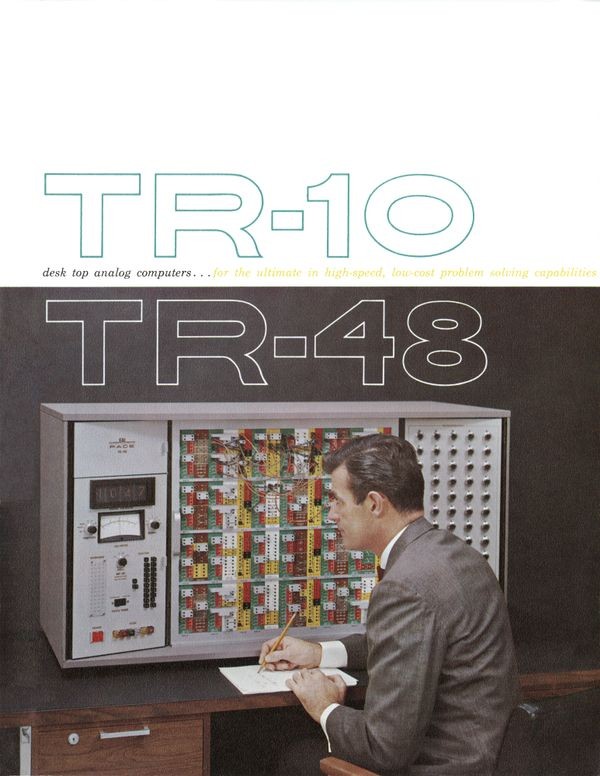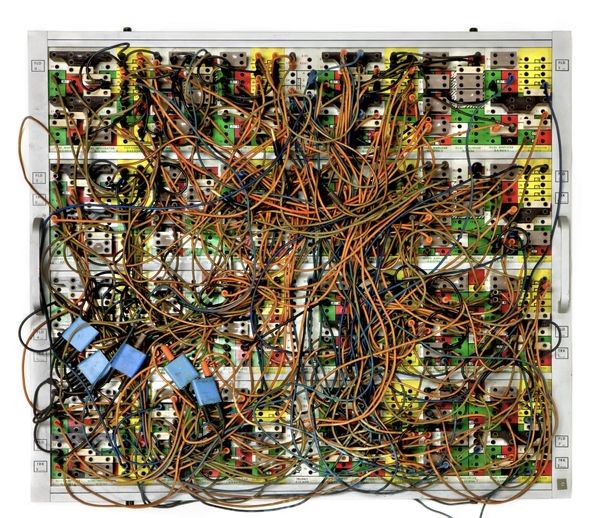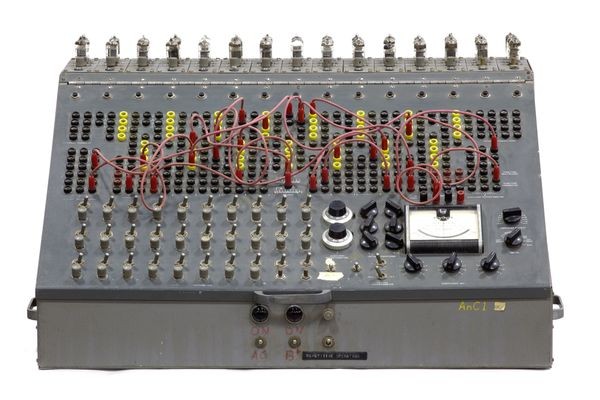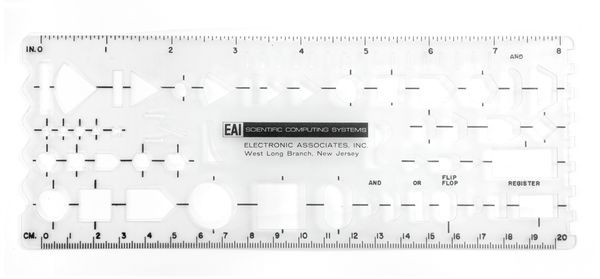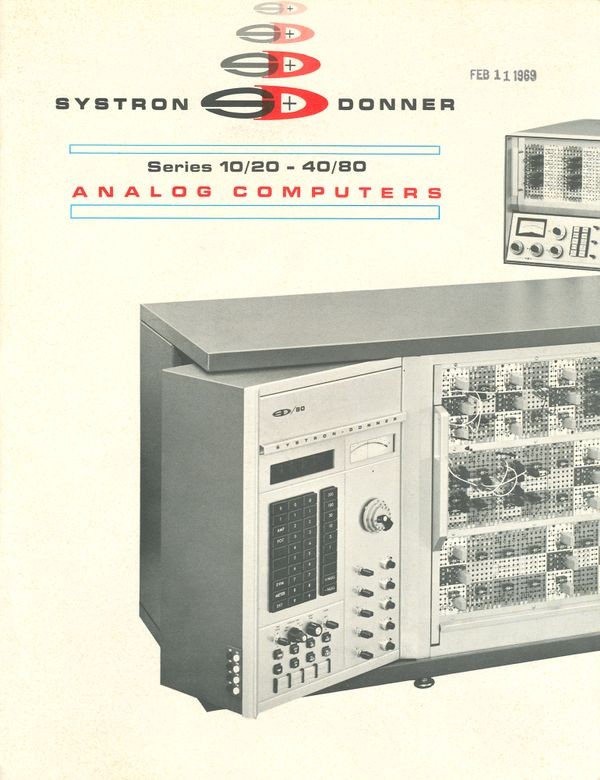Analog On Your Team
EAI PACE TR-48 analog computer
EAI was the largest supplier of general-purpose analog computers. Transistorized models like the TR-48 were used for satellite design, chemotherapy studies, chemical reactor simulation, and more.
Analog On Your Team
Even as digital computers matured, the unique strengths of analog computers remained in demand. And where there is demand, there was, and is, supply.
A new class of electronic analog machines—small, desktop models—blossomed in the 1960s and 1970s. They were widely used alongside other instruments for simulations in aeronautics, mechanical engineering, nuclear physics and other fields. Users selected input values through dials; outputs could be recorded on a plotter or display.
Electronic Associates, Inc. (EAI) led the analog desktop market, competing with Telefunken in Europe, Hitachi in Japan and other manufacturers.
EAI 580 patch panel
Early analog electronic computers were programmed with wires connecting individual units. REAC users at RAND had custom plug-boards made to create and save programs away from the computer.
View Artifact DetailH-1 Educational Computer
Founded as an airplane company, Heath became famous after World War II for its Heathkit electronics kits. The H-1 analog computer was designed for schools.
View Artifact DetailTelefunken RAT 700/2 analog computer
German electronics firm Telefunken ventured into analog computers in the 1950s. Its RAT 700 started a popular line of transistorized table-top analog computers.
View Artifact DetailEAI Flowcharting Template
Software engineers commonly draw program logic charts. Analog computer programmers did likewise—except that operations on their charts corresponded to physical components of the machine.
View Artifact Detail





